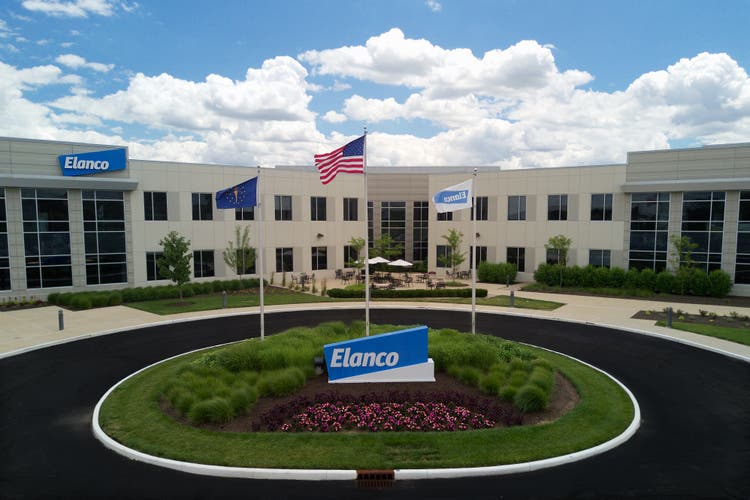T. Robin Falkner, DVM
Dr. T. Robin Falkner is a beef cattle technical consultant for Elanco Animal Health based out of Nashville, Tennessee, supporting the southeast sales district. He earned his Doctor of Veterinary Medicine from Mississippi State University.
Adopting a Wellness Mindset to Improve BRD Management
Current animal health practices focus on managing sickness, but what would happen if we shifted our focus to managing wellness?
While it seems simple, we can often struggle to define and manage animal health along a scale of success outcomes versus the absence of failure outcomes. To better understand this concept, let’s look at how we can manage wellness in terms of Bovine Respiratory Disease (BRD).
BRD most often occurs in the immediate postweaning or post-arrival period when animals transition into a new production segment.1 This transition is accompanied by stressors like weaning, transport, handling, management procedures, vaccination, new environment, adaptation to new feedstuffs, social stress from confinement and disruption of social structure.
If animals are expressing stress behaviors during transitions, it can often be mistaken for early sickness behaviors of BRD. In addition to this, when threatened, prey species can mask symptoms of illness.2,3 Say you enter a pen to check on calves. Because those calves are already stressed, they will see you as a predator and do their best to look fit and strong, which can lead us to wrongly assume no pain or illness is present.
In many cattle feeder systems, most calves might exhibit a confusing behavioral “stressed-but-not-sick” diagnostic dilemma at some point after arrival, making accurate and timely diagnosis difficult.
Misdiagnosis of illness leads to inaccurate health management records, reduced true treatment success rates–often concealed by excessive treatment of nonmorbid animals–additional stress from unnecessary treatments, wasted labor resources needed to provide husbandry and non-judicious antimicrobial use.
A wellness mindset
Often, we are so focused on preventing, diagnosing, and treating disease (failure) and miss the management utility in understanding and managing for better expression of wellness behaviors (success). The question we ought to ask ourselves is: Can we manage to get more nonmorbid cattle to exhibit stronger wellness behaviors?
Positive wellness behaviors include activities like self-grooming, positive social interactions, inquisitiveness, play and positive cognitive bias in response to new experiences. Although every animal will exhibit these behaviors differently, as their comfort level and sense of security increases, so do their signs of wellness behaviors.
In a cattle system that focuses on managing wellness, cattle experience decreased stress levels, leading to reduced susceptibility to BRD.4
Tools to proactively manage wellness
A cattle system managing wellness focuses on positive human interactions and good animal husbandry that provides comfort and security for the animals. It involves looking at the complete system to manage cattle closer to wellness by listening to what their behavior is telling you.
It starts with establishing positive relationships with cattle on arrival. Ensure calves have the necessary support for a smooth transition by having clean pens, comfortable stocking density and fresh water and palatable feed available.
For a wellness management system to be effective, it is important to have employees who are receptive and reinforce positive experiences with the cattle. Well-trained handlers who are familiar with low-stress cattle handling techniques can provide cattle with positive experiences.5 This emphasizes the importance of providing employees with training designed to improve human-animal interactions.
Vaccination and antibiotics are also an effective tool. If we know we are receiving high-risk calves, metaphylaxis treatments on-arrival help decrease the negative effects of BRD, such as morbidity and retreatment.6 It can also help reduce the need to remove animals from their new environment for treatment immediately, post-arrival, which can have negative impacts on establishing comfort and security. Providing on-arrival modified-live virus vaccinations that are proven to have no post-vaccinal stress can also help to provide protection against BRD.
The foundation of the mindset shift is that wellness is not simply the dichotomous absence of sickness, but a broader continuum that exists when disease is not present. So, ask yourself, what can I do to get more nonmorbid cattle to exhibit stronger wellness behaviors?
To learn more, talk to your Elanco representative today or visit ElancoBRD.com.
Explore More
1 Wilson BK, Richards CJ, Step DL, et al. Beef species symposium: best management practices for newly weaned calves for improved health and well-being. J Anim Sci 2017:95(5):2170–82.
2 Tizard I. Sickness behavior, its mechanisms and significance. Anim Health Res Rev 2008:9(1):87–99.
3 Hart BL, Hart LA. Sickness behavior in animals: Implications in health and wellness. In: Choe J, et al, editors. Encyclopedia of animal behavior. 2nd edition. Amsterdam: Academic Press 2019. p. 171–5.
4 Miles DG. Overview of the North American beef cattle industry and the incidence of bovine respiratory disease (BRD). Anim Health Res Rev. 2009:10(2):101-3.
5 Ceballos M, Sant’Anna A, Bolvin X, et al. Impact of good practices of handling training on beef cattle welfare and stockpeople attitudes and behaviors. Livestock Sci 2018:216:24–31.
6 Abell K, Theurer M, Larson R, et al. A mixed treatment comparison meta-analysis of metaphylaxis treatments for bovine respiratory disease in beef cattle. J Anim Sci 2017:95(2):626-35.




